Derby's Heritage Part 15 - Derby Museum & Art Gallery
w/e 27 March 2011
All this week's pictures were taken
with a Kodak DX6490
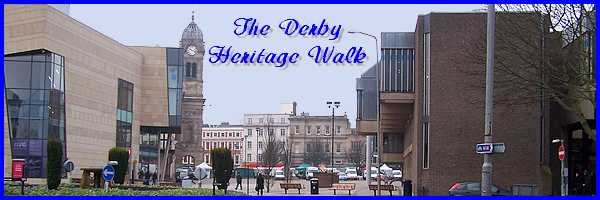
Our meanderings around our county town have now brought
us to the Derby Museum and Art Gallery to which I have devoted
the whole of this fifteenth part of the walk. It not only gives
us the chance to reflect on some of the sites we have already
visited in Derby but also to see some of the artifacts and exhibits
from other areas of Derbyshire as well.
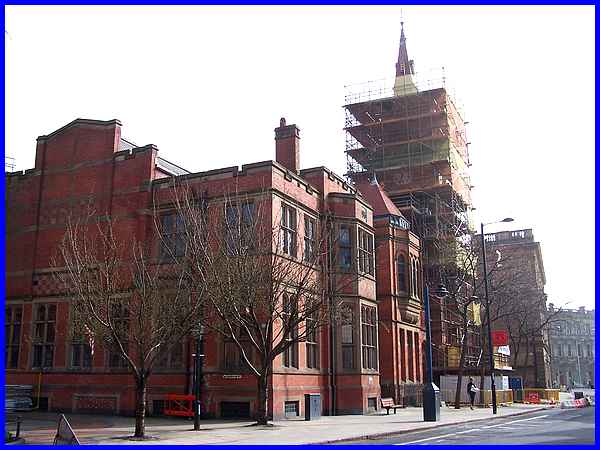
Derby Museum and Art Gallery complex also contains the Central
Library and a month on from our last visit showed that the road
works are still ongoing and part of the building is still obscured
by scaffolding. In fact the library is closed for a five week
period whilst alterations take place so views of the wrought
iron staircase and frescoed gallery in the building were not
possible - the Museum and Art Gallery were however open. The
library is a Gothic style building and was built in 1879 to a
competition winning design by R. K. Freeman having been funded
by Michael Thomas Bass MP whose statue stands (as we saw in Part
14) in Museum Square which is to the left of the image above.
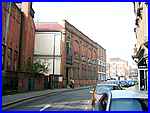 When
the scaffold is removed it will reveal the library entrance and
a Franco-Flemish tower with Arts and Crafts detailing but entry
to the Renaissance style museum and art gallery (right) which
was added in 1882 by John Soames Storey is via The Strand which
runs at the rear of the library. It can be accessed by continuing
along The Wardwick in front of the library and doubling back
along The Strand; taking a short cut through a passage at the
side of the library or by walking through Museum Square. All
the buildings in the complex are now Grade II listed. When
the scaffold is removed it will reveal the library entrance and
a Franco-Flemish tower with Arts and Crafts detailing but entry
to the Renaissance style museum and art gallery (right) which
was added in 1882 by John Soames Storey is via The Strand which
runs at the rear of the library. It can be accessed by continuing
along The Wardwick in front of the library and doubling back
along The Strand; taking a short cut through a passage at the
side of the library or by walking through Museum Square. All
the buildings in the complex are now Grade II listed.
|
A new booklet "Let's Go Wild In Derby"
detailing free walks and activities for 2011 has been published
by Derby City Council and it contains a small panel that reads:
"Derbyshire geology and wildlife feature in the Museum's
displays, with a Time Tunnel, walk-in cave, hands-on exhibits,
discovery area and a stunning series of reconstructed natural
settings with typical Derbyshire wildlife." Whilst all of
that is true it does not really convey the excellence of the
interesting exhibits and displays in the museum that tell a fascinating
story about the county. The images on this page too, hardly scratch
the surface and a visit is heartily recommended but if you do
make the trip please allow yourself plenty of time to appreciate
all that the museum holds.
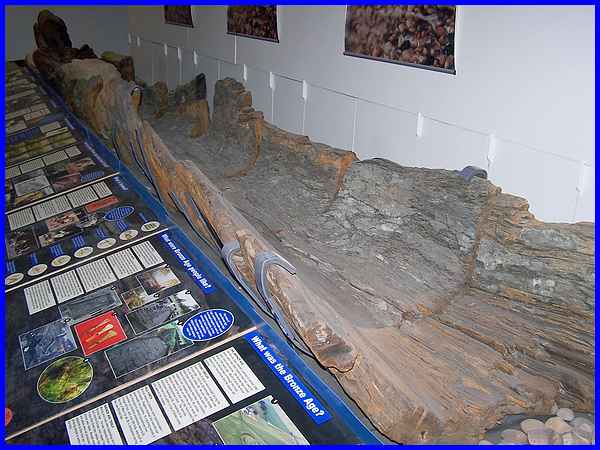
The first exhibit we saw that occupied the whole of one room
was the "Hanson Logboat" which was discovered a few
miles to the south of Derby by workmen in Hanson's Quarry at
Shardlow in 1998. Carbon dating has indicated that the boat is
some 3500 years old and although similar logboats have been discovered
in other parts of the country, this one was unusual in that it
appeared to be complete with its cargo, a load of Bromsgrove
Sandstone that is found a little way upstream at Kings Mills.
A series of panels in front of the boat reveals a wealth of information
about the boat and the Bronze Age and there is a page devoted
to it on the Wikipedia website - click here to view.
|
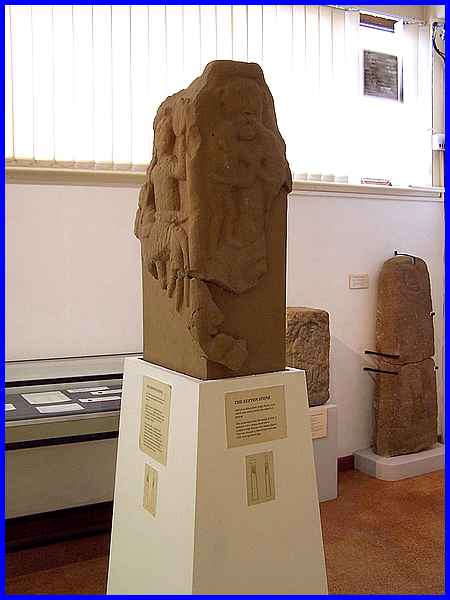
In a room adjacent to the logboat is another important find from
the south of the county, the Repton Stone. This is part of an
eighth century Anglo Saxon cross that once stood outside the
church at Repton. It is believed by archaeologists that the cross
was a memorial to Æthelbald who was King of Mercia from
716 to 757AD. It was originally about 10 feet high and probably
smashed by the Vikings in 873AD. Thought to have been finally
broken up and buried around 1100 it was discovered during excavations
in 1979.
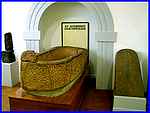
Next to the Repton Stone is a reminder of a part of Derby that
we saw in the eleventh part of this Heritage Walk. This is the
St Alkmund Sarcophagus (right) which was uncovered in 1967 when
St Alkmund's Church was demolished during the construction of
the inner ring road. St Alkmund's Church was situated on Derby’s
oldest Christian site. It pre-dates the town and the highly ornamented
stone coffin from Saxon times that has been attributed to St
Alkmund is believed by some experts to be for another, nameless
but significant, elder.
|
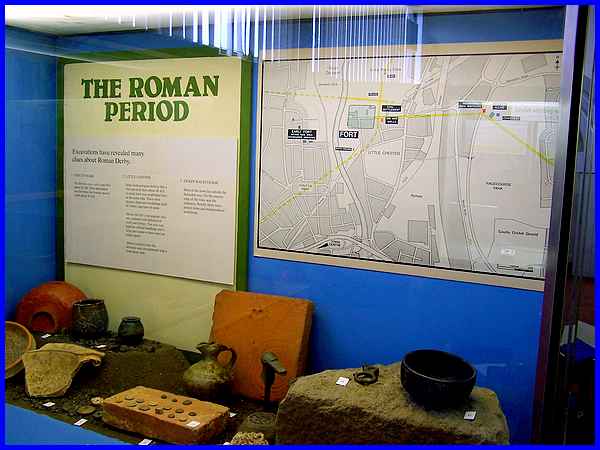
In the same room there is a display recalling the Roman Period
in Derby with relics discovered nearby and also a map of the
Little Chester area that indicates the routes of the Roman roads.
This too is also an opportunity for reflection to recall our
exploration of the Little Chester area earlier in this walk.
|
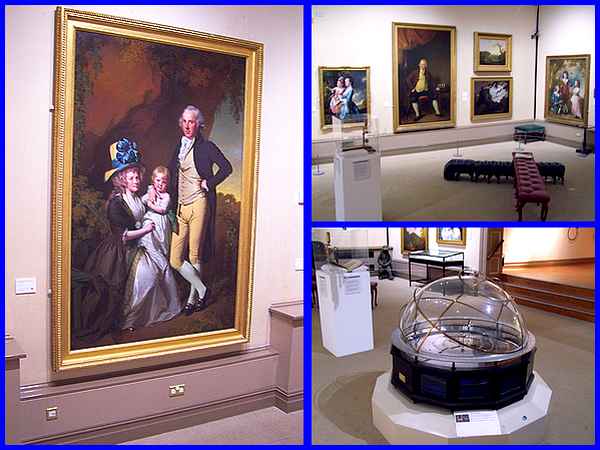
Even earlier in the walk we passed the memorial and the site
of Joseph Wright's birthplace, the famous artist born in Derby
in 1734 and the next room we visited is devoted to the man himself.
The Wright Gallery is to be refurbished during 2011 and several
of his works are currently on loan but those that remain including
"The Wood Children" of 1789 (above top right) display
a certain charm even to my eye. Personally I prefer his landscape
paintings but his "Richard Arkwright, his wife and child"
(above left) from 1790 is a good example of Wright's talent as
an artist. Wright's acclaimed masterpiece "A Philosopher giving that Lecture on the
Orrery, in which a lamp is put in place of the Sun"
from 1766 was not on display but a replica of an orrery (above
bottom right) forms the centrepiece of the room. This working
model of the solar system that demonstrates the movement of the
planets around the sun was made for the museum between 1993 and
1995 by John Gleave.
|
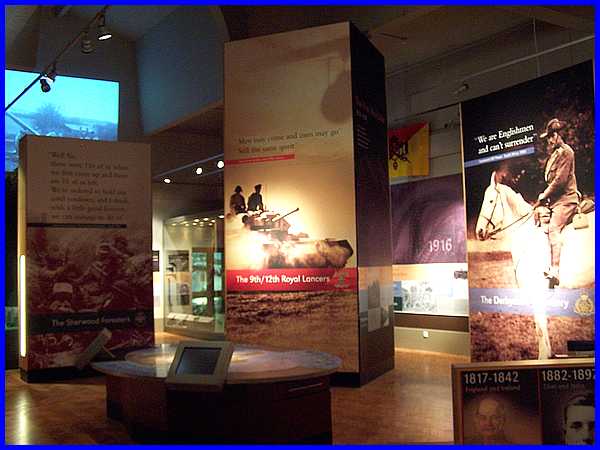
So far in our tour of the museum, many of the exhibits have been
in glass cabinets as you would expect to see in many similar
establishments but the next room we entered told the "Soldier's
Story" and had undergone a total refurbishment between 2006
and 2008 and now is much more hands-on with audio visual displays
and new high-technology fixtures and fittings. The "Story"
tells the history of regiments associated with Derbyshire including
the 9th/12th Royal Lancers, the Derbyshire Yeomanry and the Sherwood
Foresters.
|
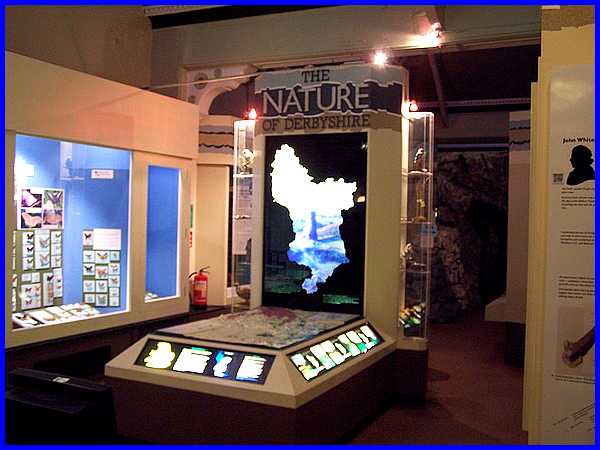
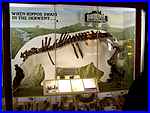 Moving on and we found the natural
history of Derbyshire well covered too and with my background
in mapping I found the three dimensional relief map of the county
particularly interesting. It came as something of a surprise
though to find a display entitled "When Hippos Swam In The
Derwent ...." (right) that contained the skeleton of a hippopotamus
that was excavated when a well was being dug in the yard of the
Crown Inn at Allenton in 1895. The remains have been dated and
are about 120 thousand years old. Other bones excavated at the
same time have been identified as being the breastbone of an
elephant and the femur of a rhinoceros. Moving on and we found the natural
history of Derbyshire well covered too and with my background
in mapping I found the three dimensional relief map of the county
particularly interesting. It came as something of a surprise
though to find a display entitled "When Hippos Swam In The
Derwent ...." (right) that contained the skeleton of a hippopotamus
that was excavated when a well was being dug in the yard of the
Crown Inn at Allenton in 1895. The remains have been dated and
are about 120 thousand years old. Other bones excavated at the
same time have been identified as being the breastbone of an
elephant and the femur of a rhinoceros.
|
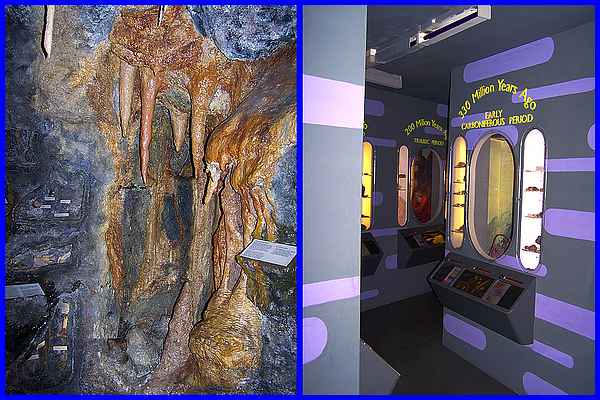
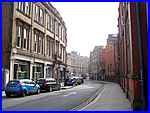 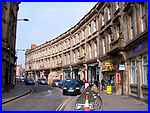 Other displays here cover Derbyshire's geology
and include the walk-in cave (above left) complete with stalactites
and stalagmites common in the Peak District. There is also the
Time Tunnel (above right) tracing the natural history of the
area from millions of years ago. We could have spent much longer
in the museum but as it was time to move on, we exited into the
impressive architecture on The Strand. Other displays here cover Derbyshire's geology
and include the walk-in cave (above left) complete with stalactites
and stalagmites common in the Peak District. There is also the
Time Tunnel (above right) tracing the natural history of the
area from millions of years ago. We could have spent much longer
in the museum but as it was time to move on, we exited into the
impressive architecture on The Strand.
|

